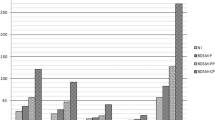Abstract
Intimate partner violence remains a persistent social and clinical problem with far-reaching effects for families and communities. With considerable debate surrounding its treatment, two main approaches are commonly described in outcome research and clinical practice literature: gender-specific (e.g. male-only groups) and systemic approaches (e.g. conjoint treatment for couples). Proponents of the former approach cite the risks of systemic approaches that unwittingly sustain the oppression of women, while proponents of the latter highlight the importance of addressing reciprocal patterns of violence and cumulative sources of stress upon a couple. In this review, the author describes some of the issues pertinent to this debate, highlighting areas of risk and hope. The combined use of gender-specific and conjoint treatment may be beneficial for some couples under particular circumstances. The paper closes with considerations for conducting conjoint treatment.
Similar content being viewed by others
References
Barnett, O. W., Lee, C. Y., & Thelen, R. E. (1997). Gender differences in attributions of selfdefense and control in interpartner aggression. Violence Against Women, 3, 462–481.
Belknap, J. (2001). The invisible woman: Gender, crime, and justice (2nd ed.). Belmont, CA: Wadsworth Publishing Co..
Bograd, M. (1984). Family systems approaches to wife battering: A feminist critique. American Journal of Orthopsychiatry, 54(4), 558–568.
Bograd, M. (1992). Values in conflict: Challenges to family therapists’ thinking. Journal of Marital and Family Therapy, 18(3), 245–256.
Bograd, M., & Mederos, F. (1999). Battering and couples therapy: Universal screening and selection of treatment modality. Journal of Marital and Family Therapy, 25(3), 291–312.
Bradley, R. P. C., & Gottman, J. M. (2012). Reducing situational violence in low-income couples by fostering healthy relationships. Journal of Marital and Family Therapy, 38(s1), 187–198.
Bradley, R. P. C., Drummey, K., Gottman, J. M., & Gottman, J. S. (2014). Treating couples who mutually exhibit violence or aggression: Reducing behaviors that show a susceptibility for violence. Journal of Family Violence, 29, 549–558.
Davis, L. V., & Hagen, J. (1992). The problem of wife abuse: The interrelationship of social policy and social work practice. Social Work, 37, 15–20.
Dobash, R. E., & Dobash, R. P. (1979). Violence against wives. New York: Free Press.
George, J., & Stith, S. M. (2014). An updated feminist view of intimate partner violence. Family Process, 53, 179–193.
Gurman, A. S., & Burton, M. (2014). Individual therapy for couple problems: Perspectives and pitfalls. Journal of Marital and Family Therapy, 40(4), 470–483.
Harris, G. E. (2006). Conjoint therapy and domestic violence: Treating the individuals and the relationship. Counselling Psychology Quarterly, 19(4), 373–379.
Hattendorf, J., & Tollerud, T. R. (1997). Domestic violence: Counseling strategies that minimize the impact of secondary victimization. Perspectives in Psychiatric Care, 33(1), 14–23.
Holtzworth-Munroe, A. (2001). Standards for batterer treatment programs: How can research inform our decisions? Journal of Aggression, Maltreatment & Trauma, 5(2), 165–180.
LaTaillade, J. J., Epstein, N. B., & Werlinich, C. A. (2006). Conjoint treatment of intimate partner violence: A cognitive behavioral approach. Journal of Cognitive Psychotherapy: An International Quarterly, 20(4), 393–410.
Lechtenberg, M., Stith, S., Horst, K., Mendez, M., Minner, J., Dominguez, M., & McCollum, E. (2015). Gender differences in experiences with couples treatment for IPV. Contemporary Family Therapy, 37, 89–100.
Maiuro, R. D., & Eberle, J. A. (2008). State standards for domestic violence perpetrator treatment: Current status, trends, and recommendations. Violence and Victims, 23(2), 133–155.
McCollum, E. E., & Stith, S. M. (2007). Conjoint couple’s treatment for intimate partner violence: Controversy and promise. Journal of Couple and Relationship Therapy, 6(2), 71–82.
McCollum, E. E., & Stith, S. M. (2008). Couples treatment for interpersonal violence: A review of outcome research literature and current clinical practices. Violence and Victims, 23(2), 187–201.
McPhail, B. A., Busch, N. B., Kulkarni, S., & Rice, G. (2007). An integrative feminist model: The evolving feminist perspective on intimate partner violence. Violence Against Women, 13(8), 817–841.
O’Leary, K. D. (2001). Conjoint therapy for partners who engage in physically aggressive behaviour: Rationale and research. Journal of Aggression, Maltreatment & Trauma, 5(2), 145–164.
Rosen, K. H., Matheson, J. L., Stith, S. M., McCollum, E. E., & Locke, L. D. (2003). Negotiated time-out: A de-escalation tool for couples. Journal of Marital and Family Therapy, 29(3), 291–298.
Stith, S. M., McCollum, E. E., Amanor-Boadu, Y., & Smith, D. (2012). Systemic perspectives of intimate partner violence treatment. Journal of Marital and Family Therapy, 38(1), 220–240.
Sylaska, K. M., & Edwards, K. M. (2014). Disclosure of intimate partner violence to informal social support network members: A review of the literature. Trauma, Violence & Abuse, 15(1), 3–21.
Todahl, J., Linville, D., Shamblin, A. F. T., & Ball, D. (2012). Client narratives about experiences with a multicouple treatment program for intimate partner violence. Journal of Marital and Family Therapy, 38(s1), 150–167.
Vall, B., Seikkula, J., Laitila, A., Holma, J., & Botella, L. (2014). Increasing responsibility, safety, and trust through a dialogical approach: A case study in couple therapy for psychological abusive behavior. Journal of Family Psychotherapy, 25(4), 275–299.
Yodanis, C. L. (2004). Gender inequality, violence against women, and fear: A crossnational test of the feminist theory of violence against women. Journal of Interpersonal Violence, 19, 655–675.
Acknowledgments
The author acknowledges the anonymous reviewers and Gayatri for their help with improving the paper. Thanks must also go to Dally.
Author information
Authors and Affiliations
Corresponding author
Ethics declarations
Conflict of Interest
The author declares no financial conflicts of interest.
Human and Animal Rights
The paper does not involve a study with animal or human patients.
Informed Consent
There are no informed consent notifications to state.
Additional information
Nandini Maharaj, School of Population and Public Health, University of British Columbia.
Rights and permissions
About this article
Cite this article
Maharaj, N. Perspectives on Treating Couples Impacted by Intimate Partner Violence. J Fam Viol 32, 431–437 (2017). https://doi.org/10.1007/s10896-016-9810-6
Published:
Issue Date:
DOI: https://doi.org/10.1007/s10896-016-9810-6



